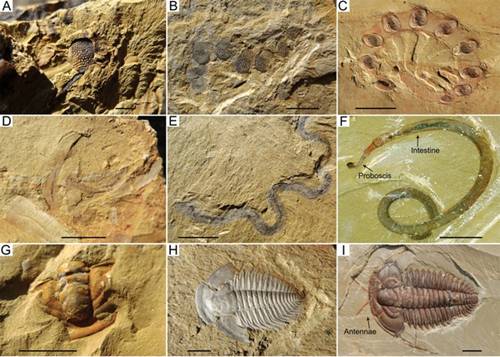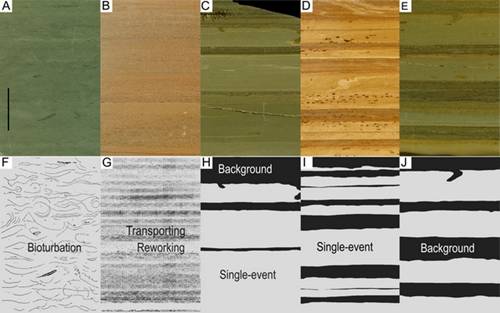Cambrian Konservat Lagerstätten such as the Chengjiang Biota and the Burgess Shale preserve far more biological and ecological information than do ordinary fossil deposits containing biomineralized organisms only. Yet in spite of the critical importance of Konservat Lagerstätten for understanding the origin and development of modern-style ecosystems following the “Cambrian explosion”, the degree to which species diversity and composition vary between localities, and the environmental, taphonomic, ecological and evolutionary factors controlling this variation, are still poorly understood.
Dr. ZHAO Fangchen from Nanjing Institute of Geology and Palaeontology, Chinese Academy of Sciences and his colleagues recently make an important progress in paleoecology of Cambrian Chengjiang Lagerstätten. They intensively studied the fossil strata hosting the Lower Cambrian (Series 2, Stage 3) Chengjiang Biota (Maotianshan Shale Member, Yu'anshan Formation) occur throughout the eastern part of Yunnan Province, Southwest China. In their study, literature-based faunal inventories from 10 areas (representing 34 localities), together with 22,038 new specimens collected at three localities from three of the 10 areas, were analyzed quantitatively to assess large-scale spatial variation in taxonomic diversity and composition. These analyses show substantial covariation between local paleoenvironmental settings and species diversity, and suggest the presence of three general taphofacies in the Maotianshan Shale Member. Their study shows that the Chengjiang Biota lends itself very well to high resolution characterization of spatial variation in taxonomic diversity, faunal composition and fossil preservation. Furthermore, the Chengjiang Biota may provide a unique opportunity to assess the roles of environmental factors, taphonomy and ecological controls on species diversity at local to regional spatial scales.
This work has been recently published in Palaeogeography, Palaeoclimatology, Palaeoecology (Fangchen Zhao, Shixue Hu, Jean-Bernard Caron, Maoyan Zhu, Zongjun Yin, Miao Lu, 2012. Spatial variation in the diversity and composition of the Lower Cambrian (Series 2, Stage 3) Chengjiang Biota, Southwest China, Palaeogeography. Palaeoclimatology. Palaeoecology, Volumes 346-347, 54-65. http://dx.doi.org/10.1016/j.palaeo.2012.05.021)

Representative fossils from the lower Cambrian Yu'anshan Formation, Maotianshan Member, showing the preservational characteristics of the three general taphofacies present in Eastern Yunnan.

Polished slabs and schematic diagrams of typical sedimentary facies.

Simplified storm event model showing the relative positions of different taphofacies and ecological spaces of the Chengjiang Biota.
(Information source: Nanjing Institute of Geology and Palaeontology of CAS)

